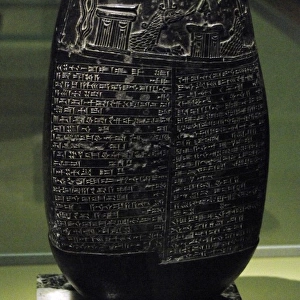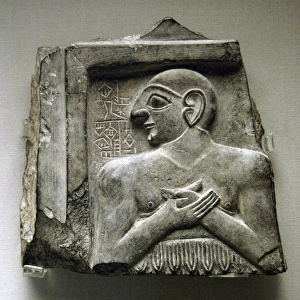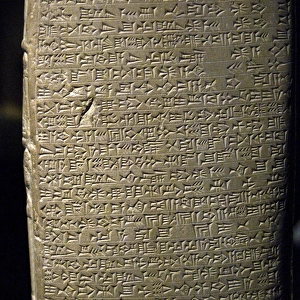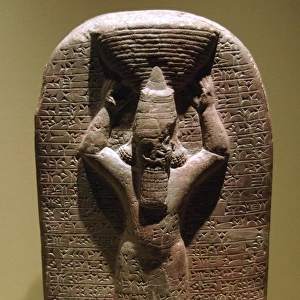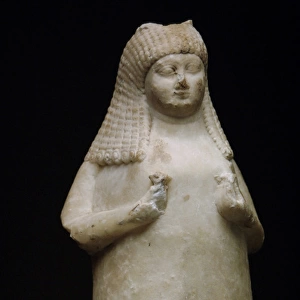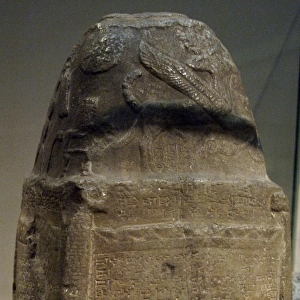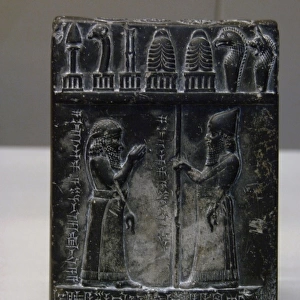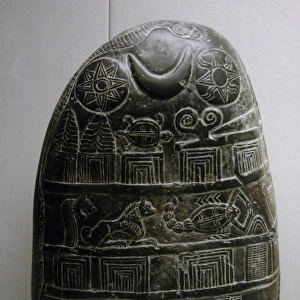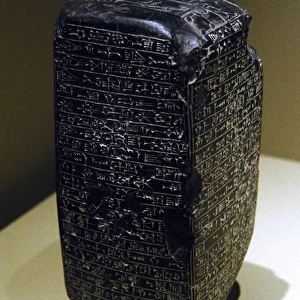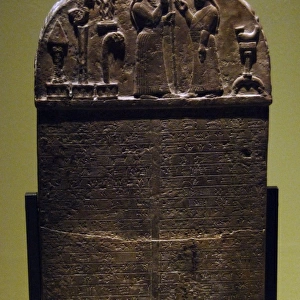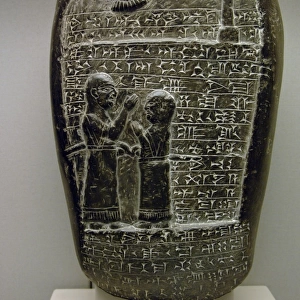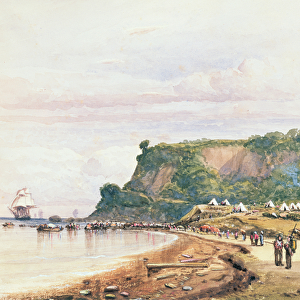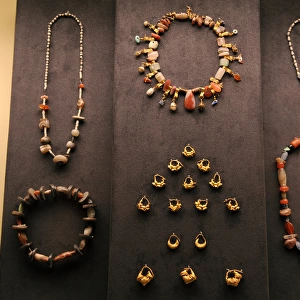Home > Europe > United Kingdom > England > London > Sights > British Museum
Middle Babylonian. 954 B. C. Limestone boundary-stone or kudu
![]()

Wall Art and Photo Gifts from Mary Evans Picture Library
Middle Babylonian. 954 B. C. Limestone boundary-stone or kudu
Mesopotamian Art. Middle Babylonian. 954 B.C. Limestone boundary-stone or kudurru, inscribed in cuneiform script that describes the fight between two families for the grant of land from one state to another by marriage. At the top is depicted in relief the king of Babylon Nabu-mukin-appli (978-943 B.C.). Front. It comes from Sippar. British Museum. London. United Kingdom
Mary Evans Picture Library makes available wonderful images created for people to enjoy over the centuries
Media ID 14364973
© Thaliastock / Mary Evans
10th Babylon Babylonian Boundary Carved Cuneiform Document Dynasty Fight Grant Inscribed Kudurru Lance Legal Limestone Mesopotamia Mesopotamian Script
FEATURES IN THESE COLLECTIONS
> Europe
> United Kingdom
> England
> London
> Museums
> British Museum
> Europe
> United Kingdom
> England
> London
> Sights
> British Museum
> Historic
> Ancient civilizations
> Mesopotamia
> Ancient Mesopotamian art
EDITORS COMMENTS
This striking limestone boundary-stone, or kudurru, dates back to 954 B.C. and is an exemplary piece of Middle Babylonian art. The intricately carved relief depicts a significant historical event: a land grant made by the state of Babylon to two families through a marriage alliance. At the top of the stone, the powerful King of Babylon, Nabu-mukin-apli (r. 978-943 B.C.), is shown in regal attire and holding a lance, asserting his authority over the transaction. The relief below illustrates the fight between the two families, the Eriba-Marduk and the Ea-nasir, vying for the land grant. The front side of the kudurru is inscribed in the ancient cuneiform script, which documents the legal agreement between the parties. This inscription is a crucial historical record, providing insights into the political and social dynamics of the Middle Babylonian period. Originating from the ancient city of Sippar, this artifact is now housed in the British Museum in London, United Kingdom. It is a testament to the rich cultural heritage of Mesopotamia, a region that has played a pivotal role in the development of human civilization. The kudurru stands as a reminder of the complex legal and political systems that governed ancient societies, and the importance of alliances and marriages in shaping the landscape of power and territory. Its intricate carvings and historical significance make it an invaluable addition to the annals of human history.
MADE IN THE UK
Safe Shipping with 30 Day Money Back Guarantee
FREE PERSONALISATION*
We are proud to offer a range of customisation features including Personalised Captions, Color Filters and Picture Zoom Tools
SECURE PAYMENTS
We happily accept a wide range of payment options so you can pay for the things you need in the way that is most convenient for you
* Options may vary by product and licensing agreement. Zoomed Pictures can be adjusted in the Basket.


